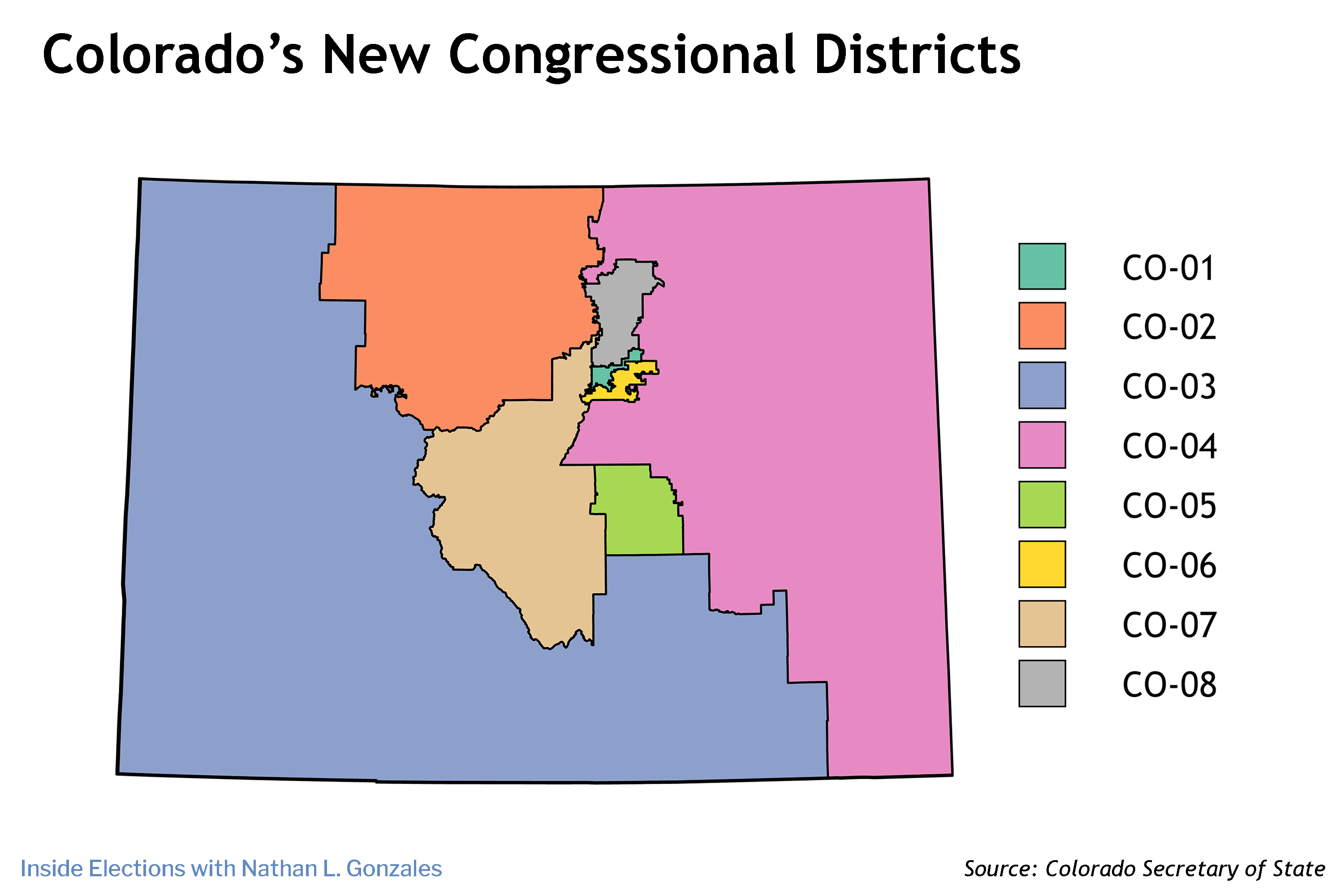In the late hours of Sept. 28, Colorado’s independent redistricting commission approved a new congressional map. The Centennial State was allocated an additional representative in Congress during this year’s decennial reapportionment, and (pending final approval from the state Supreme Court) we now know what the new 8th District — as well as the updated lines for Colorado’s seven existing districts — will look like.
A New District
The most significant change to Colorado’s congressional map is the addition of the 8th District, which is situated in the suburbs north of Denver.
The 8th was designed with Colorado’s diverse demographics in mind. Specifically, one focus during the redistricting process was increasing representation for the state’s Hispanic community: although approximately 22 percent of Colorado’s population is Hispanic, there are currently no Hispanic members in its congressional delegation. But by taking in portions of Adams and Weld counties, including Commerce City, the 8th will be the most heavily Hispanic of Colorado’s eight districts, at 38.5 percent.

The 8th will also likely be Colorado’s most competitive district. It would have voted for Donald Trump by 2 points in 2016, and for Joe Biden by 4 points in 2020. More broadly, across the 10 statewide elections that have taken place in Colorado since 2016, the final margin for either party in the 8th was never larger than 5 points, demonstrating just how close future races might be.
The election to give the 8th its inaugural representative is still a year away, but a field is already starting to develop. Democratic state Rep. Yadira Caraveo announced her intention to run for the new seat in late August, a full month before the final map was...

